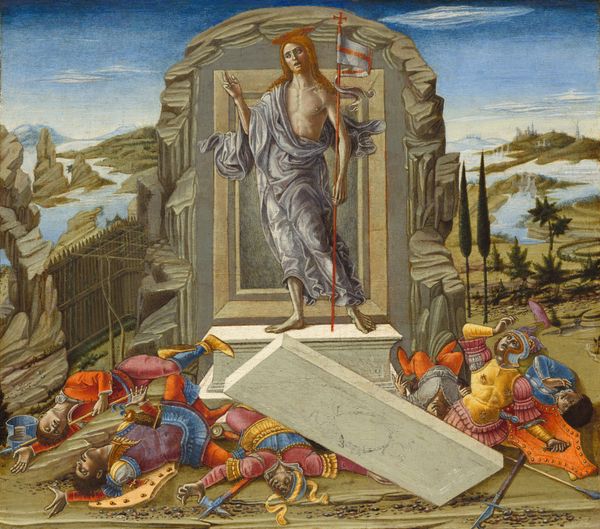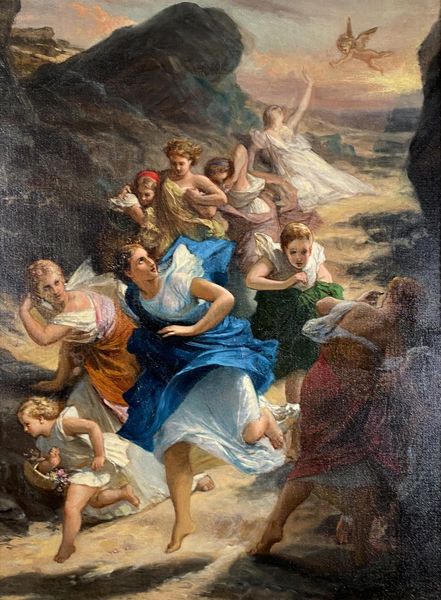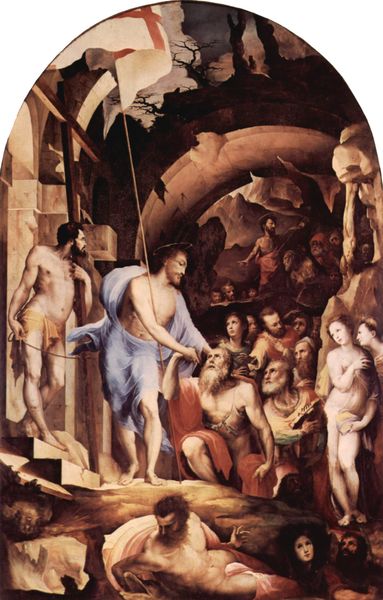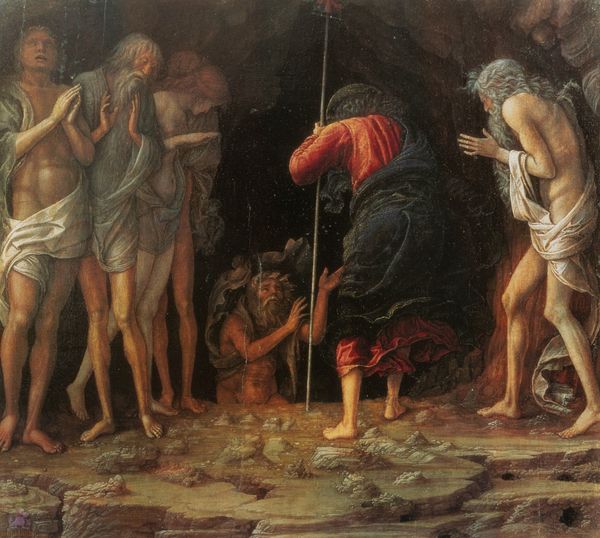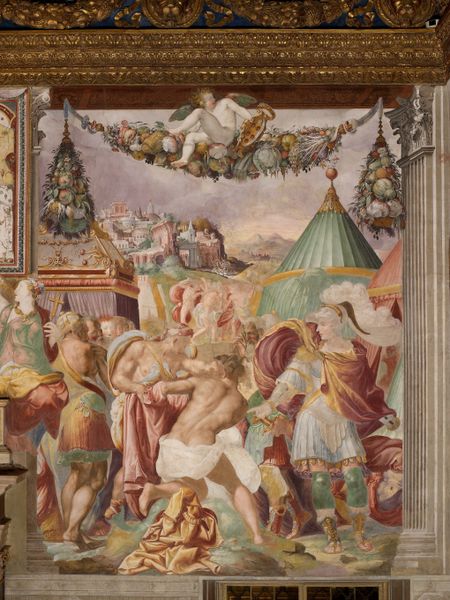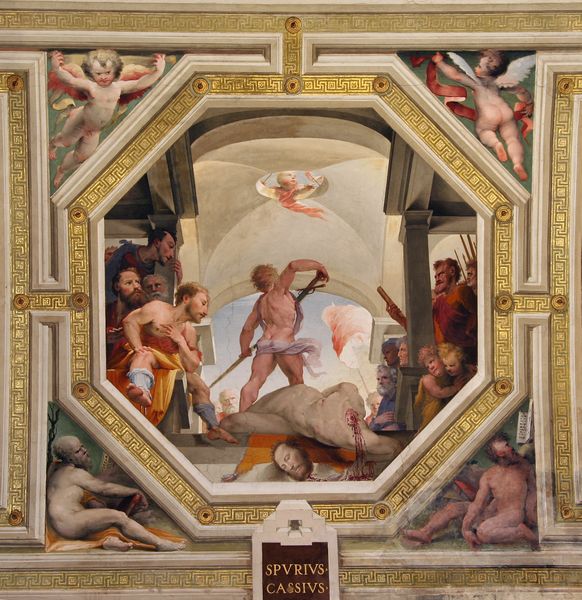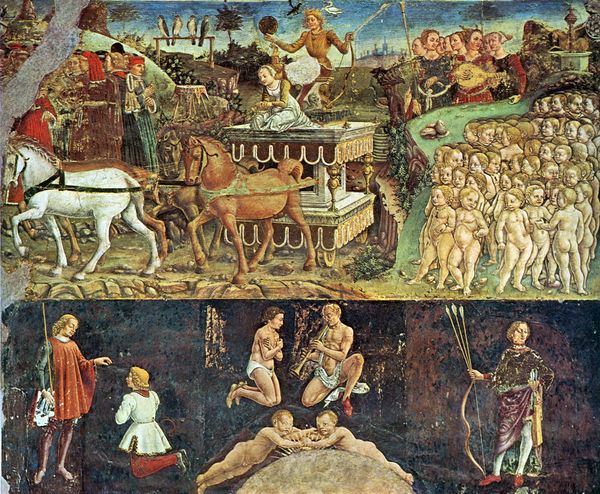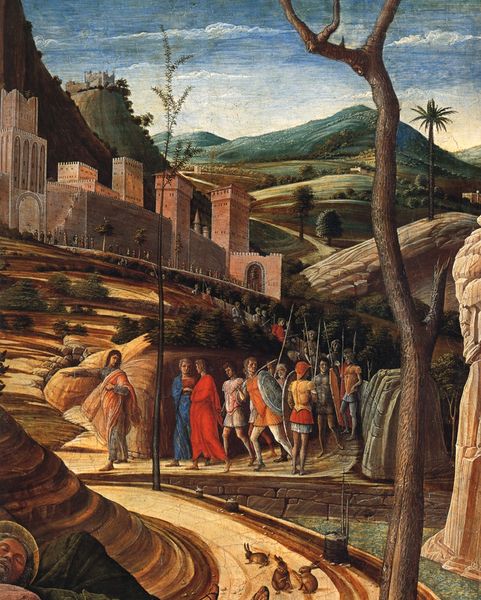
#
possibly oil pastel
#
handmade artwork painting
#
oil painting
#
acrylic on canvas
#
coloured pencil
#
coffee painting
#
underpainting
#
painting painterly
#
watercolour illustration
#
watercolor
Dimensions: painted surface: 42.1 × 46.6 cm (16 9/16 × 18 3/8 in.) overall size: 43 × 48.7 cm (16 15/16 × 19 3/16 in.) framed (with four other paintings): 59.69 × 283.21 × 5.4 cm (23 1/2 × 111 1/2 × 2 1/8 in.)
Copyright: National Gallery of Art: CC0 1.0
Curator: This tempera-on-panel painting, executed circa 1491 by Benvenuto di Giovanni, is titled "Christ in Limbo." Editor: Well, that’s one heck of an entry! Right off the bat, the thing that grabs you is that dramatic staging—Christ emerging from what looks like a mausoleum door, almost like he’s stepping onto a theatre stage, while a poor devil writhes beneath. Very dynamic! Curator: Indeed. The formal elements—the composition and color palette—serve to amplify this dynamism. Note how the architectural elements frame and compress the scene into planes, creating an almost theatrical space, as you said, emphasizing the perspectival push and pull. Editor: And the colors! It's not the heavenly golds and radiant blues you might expect, but this muted, almost earthy palette. That grayish, almost deathly pallor of Christ's robe adds to the otherworldly mood, doesn’t it? Feels like redemption viewed through a veil of sorrow. Curator: The artist deliberately plays with contrasts: the cool tonalities of Christ and his garment are juxtaposed with warmer hues used to depict the figures he is liberating. Semiotically, one might argue that this serves to underline Christ's redemptive power over mortal men and sin. The figures on either side also appear to form triangular shapes directing our attention to the red cross, perhaps alluding to his ultimate sacrifice. Editor: All I see is that reaching hand… the longing in those faces behind the door, as Christ literally pulls people from darkness into the light. You know, limbo – that space between heaven and hell. It’s fascinating to think of it not as a place, but as this very moment, this very choice, this very… extraction. Brrr…! Curator: Such pictorial arrangements are deeply steeped in theological intent, intended to invoke reflection, the purpose of religious painting at this time. I wonder what Benvenuto di Giovanni would make of our interpretation of his symbolism… Editor: Maybe he'd raise an eyebrow and tell us we're overthinking it! But that's the beauty of art, right? It invites us into the story.
Comments
No comments
Be the first to comment and join the conversation on the ultimate creative platform.
